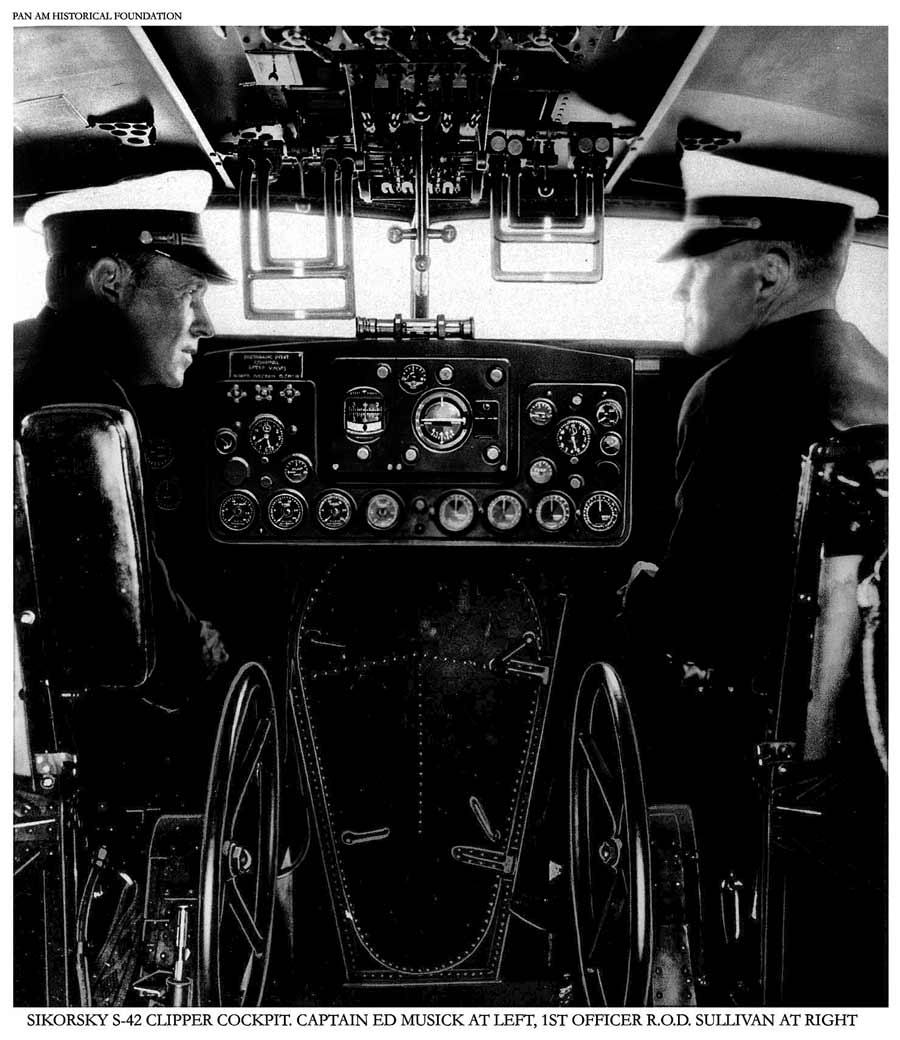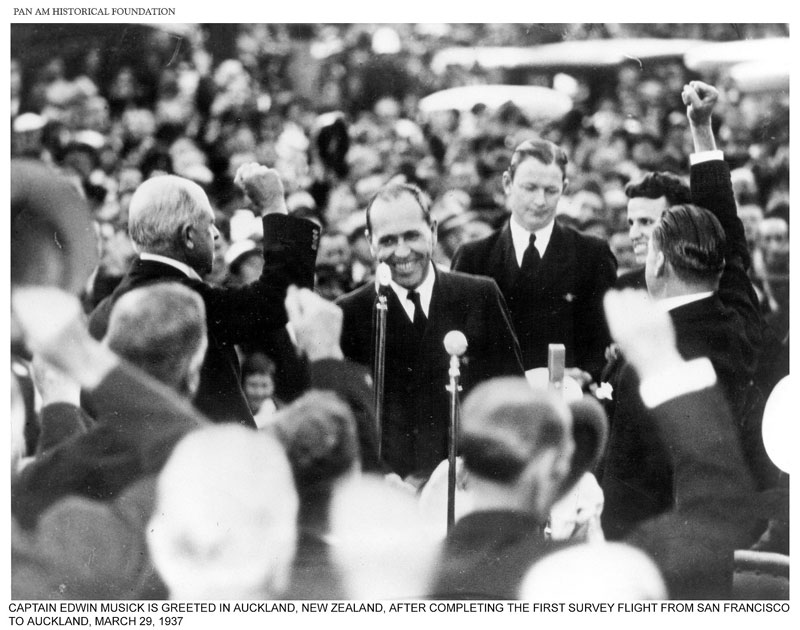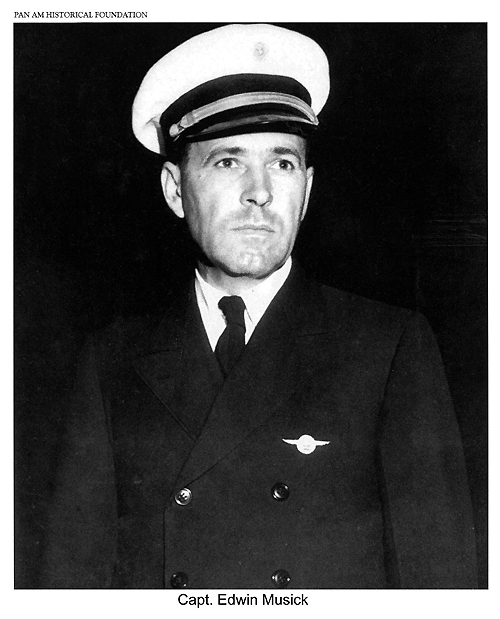Ed Musick
1894-1938

One of America's most beloved early commercial pilots, Ed Musick was born in St. Louis, Missouri in 1894 and moved to California with his family when he was 9 years old. His lifelong obsession with planes and flying began with a trip to the Dominguez air races during his second year of high school. At age 19, before finishing school, he enrolled in a commercial flying course to become an aviation instructor and pilot. During World War I, Musick served as a civlian instructor in the Army Air Corps in San Diego, Wichita Falls and Miami. After the war, he worked as a pilot for various airlines until his appointment to the position of chief pilot for Juan Trippe's Pan American Airways Caribbean division.
Musick was licensed to fly any type of plane, and he was given every opportunity to prove this in his position as Pan American's premier pilot. During his work for the airline, Musick set ten world records including making the inaugural flight to the Pacific aboard the China Clipper flying boat. The China Clipper's momentous flight cemented Musick's place as a modern day hero.
Although his Pacific journey from California to Manila on the China Clipper was perhaps his most famous flight, he is also legendary for breaking the isolation of the remote Pacific island of New Zealand. Flying the Samoan Clipper from San Francisco to New Zealand, Musick received an unprecedented welcome when thirty thousand New Zealander's turned out to greet him. A man of notoriously few words, Musick addressed the wildly cheering crowd by saying only “We are glad to be here."

Pan American's decision to fly to New Zealand was the result of strained relations between Pan American Airways and Great Britain and her colonies. While Trippe's Pan American Airways dominated the skies on routes throughout North and South American and the Pacific Islands, they were unable to come to an agreement to fly to Britain and her colonies. Britain would not allow Pan American to land on British soil before their Imperial Airways could reciprocate. After waiting for years for a shared Atlantic route agreement with Imperial, Trippe decided to look into his other options worldwide. On March 11, 1937, New Zealand broke rank with Australia and Britain to allow Pan American to fly there and Pan American quickly sent Musick on yet another historical journey.
Despite a career as a meticulous and focused pilot, Musick was not indestructible. On January 11, 1938, Musick took off from Pago Pago piloting the Samoan Clipper to begin a survey flight and soon after the flight began, he reported an oil leak in engine number 4. In an attempt to assure a safe landing, he made the fateful decision to dump fuel in order to lighten the plane. The decision proved disastrous when fuel vapors collected in the wing structure causing the plane to explode in mid-air. The US Navy ship Avocet recovered the scattered remains of the clipper that evening.
At the time of his death, Musick was unquestionably the world's most famous pilot. His face graced the cover of TIME Magazine and he was awarded the Harmon Trophy for his work. Musick's accident ended his life at the height of his career and he was greatly mourned. His illustrious career has earned him a place of honor in the annals of early commercial aviation. -Pan American World Airways
Read more about the Samoan Clipper: What We Owe Ed Musick

Captain Ed Musick on Midway Atoll
Related Articles
Samoan Clipper Story: The history of the lost Pan Am Samoan Clipper and plans that leading to the July 2019 search expedition by Air/Sea Heritage Foundation, working with Search, Inc. and Ocean Exploration Trust. Air/Sea Heritage's mission to locate, identify, & document wreckage of the plane continues even today.
Samoan Clipper Search: The hunt for Samoan Clipper, Pan Am's lost S-42B piloted by Ed Musick in 1938, includes a contemporary journal of the July 2019 undersea search aboard the EV Nautilus, off American Samoa, written by Russ Matthews, President & Co-Founder of Air/Sea Heritage Foundation.




